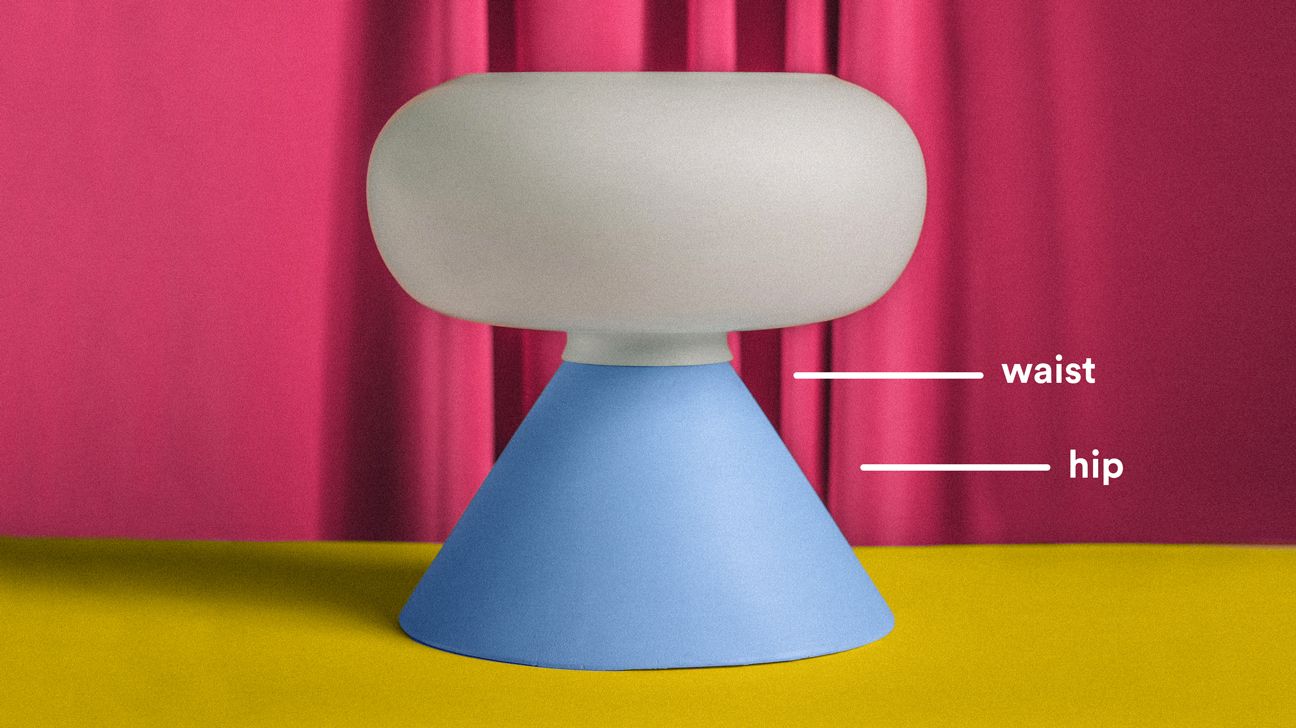You’ve probably heard of body mass index (BMI), but what about waist-to-hip ratio (WHR)?
WHR is supposedly a way to measure and evaluate body weight and overall health. While BMI represents your weight-to-height ratio, WHR is the ratio between your waist and hip circumferences. It’s thought to determine the amount of fat stored on your hips, waist, and booty.
Why is WHR a thing? Some doctors consider it a straightforward way to monitor a person’s risk of developing weight-related health conditions.
According to the World Health Organization (WHO), a healthy WHR is:
- 0.85 or lower for women
- 0.9 or lower for men
According to the same report, a WHR of 1.0 or more in men and women is thought to increase the risk for conditions like heart disease and type 2 diabetes.
According to the WHO, the following chart can help you use WHR to determine your possible risk of weight-related health concerns:
| Health risk level | WHR (women) | WHR (men) |
| low | 0.80 or lower | 0.95 or lower |
| moderate | 0.81–0.85 | 0.96–1.0 |
| high | 0.86 or higher | 1.0 or higher |
Take it with a grain of salt
Like BMI, WHR is a general guideline and not necessarily a predictor of your potential health risks. It doesn’t account for unique contributors like personal health history, age, reproductive status, and ethnicity — all of which are known to affect the measurement’s accuracy.
Wondering how you can figure out your WHR? It’s simple. Grab a measuring tape and follow these steps to measure your waist and hip circumferences:
- Mind that posture and stand up straight.
- Exhale.
- Measure just above your belly button, where your waist is the smallest. Be sure not to pull the measuring tape too tight!
- Note the measurement (inches or centimeters).
- Repeat for your hips, measuring the widest part.
Now it’s time to use those math skills (or a calculator — we won’t judge). Divide your waist circumference by your hip circumference and… voilà! You have your WHR.
The upside of WHR is that it’s easy and cheap to measure on your own and can be a fairly accurate measurement of body fat.
Some experts consider WHR more accurate than BMI for determining risk of heart disease or even premature death. For instance, a 2015 study of more than 15,000 adults found that participants who had a “normal” BMI but an elevated WHR were at a higher risk of early death.
There’s a lot of room for error when measuring WHR. Sometimes the hips do lie. Taking two different measurements can be harder than it seems, and an inaccurate measurement can skew your results.
Even if you have an accurate measurement, outside forces can foil your WHR calculation. Some conditions — like uterine fibroids, PCOS, or merely those muscle #gainz from “dropping it like a squat” — can affect the translation of your WHR.
And for folks who are under 5 feet tall or have a BMI of 35+, an accurate WHR reading is unlikely. It’s also not recommended that WHR be used with kids, since their bodies are still developing.
Things are about to get a little fruity — bear with us. Everybody and every body is uniquely beautiful and carries weight differently.
Peeps with “apple-shaped” bodies, who tend to carry their weight around their midsection, and “pear-shaped” folks, who tend to carry weight in their hips, are considered higher-risk for developing health conditions such as:
Some doctors may use WHR to determine whether a person has obesity or is carrying more weight than is recommended for their optimal health. According to the WHO, a WHR higher than 0.90 in men or higher than 0.85 in women is considered an indication of obesity.
For many adults, a WHR of 1.0 or more can mean a higher risk for the above health conditions. But a number is just a number, and many other factors contribute to your overall health.
Unfortunately, weight discrimination is a widespread problem, even in medical settings. The good news is that you may be able to find a Health at Every Size (HAES) practitioner who will take a weight-neutral approach to your health needs.
If you and your doctor decide that shedding some inches from your WHR would be beneficial, you can work toward that goal with small, manageable lifestyle changes.
Increasing your daily physical activity and establishing a heart-healthy nutrition plan can help you target visceral fat (the fat that sits on your internal abdominal organs and is linked to chronic health issues).


